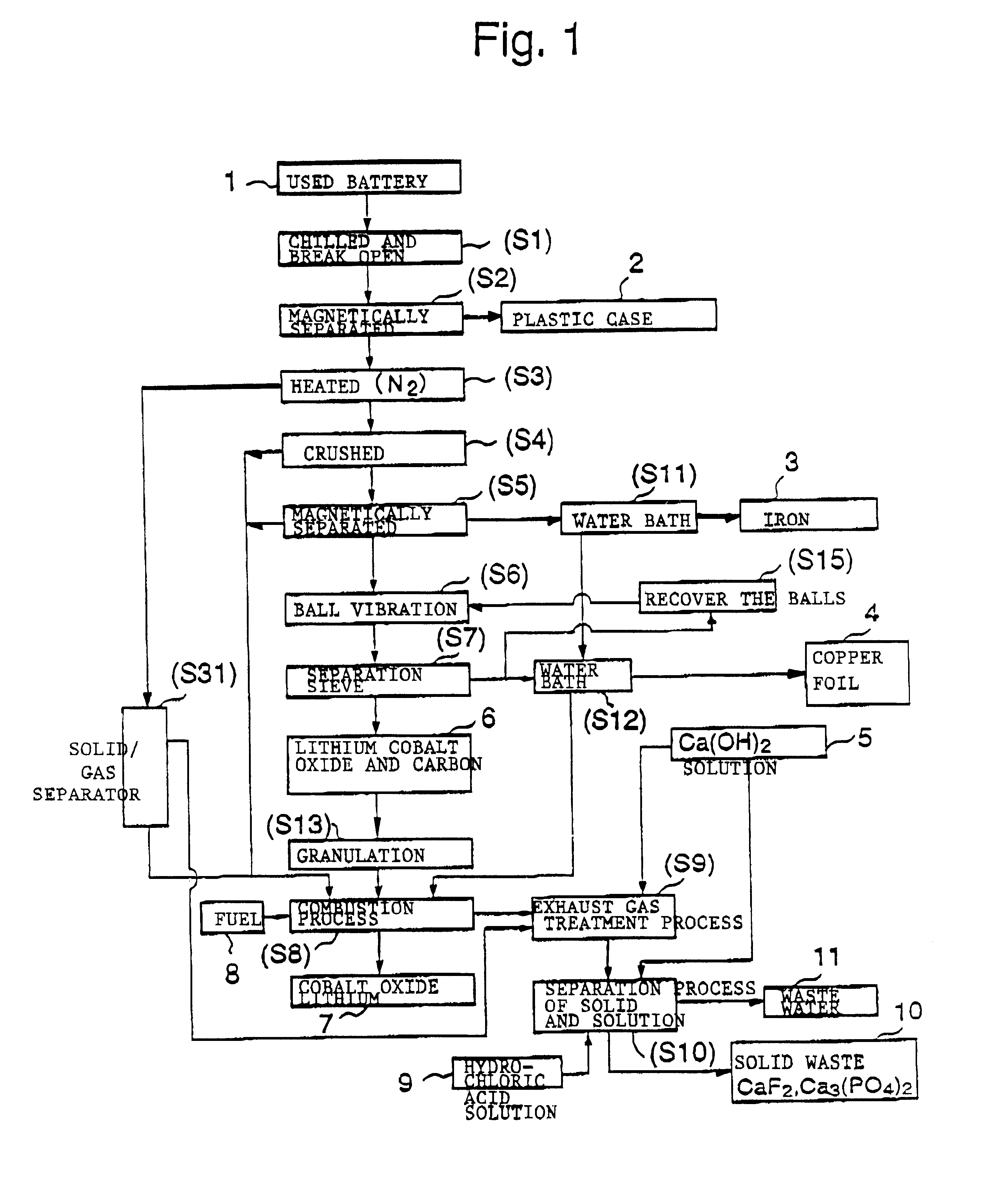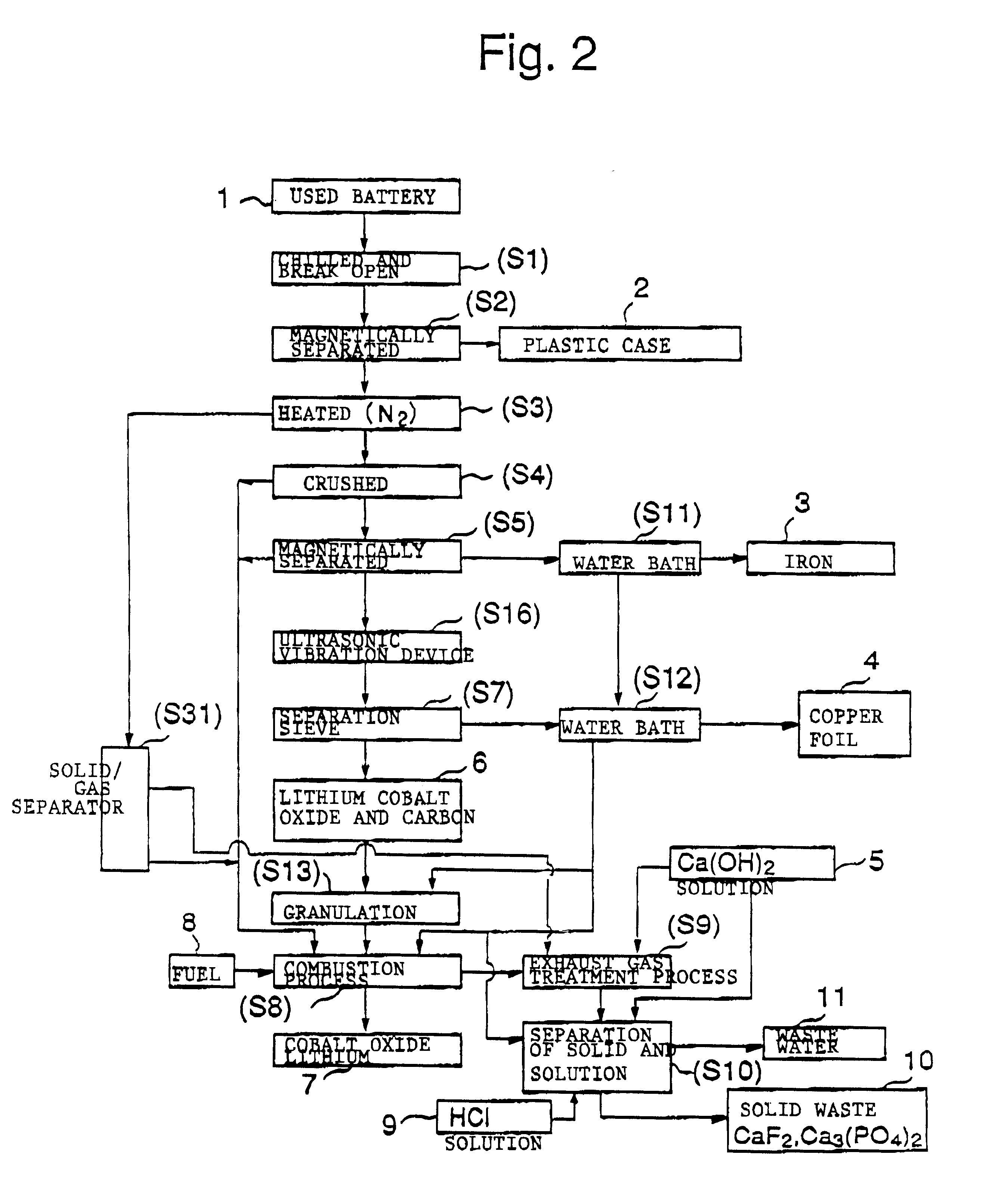Method for crushing cell
a technology of crushing cell and battery, which is applied in the direction of secondary cell servicing/maintenance, primary cell maintenance/service, electrochemical generator, etc., can solve the problems of difficult removal, short circuit, and extreme difficulty in recovering valuable materials such as lithium cobalt oxide from these batteries
- Summary
- Abstract
- Description
- Claims
- Application Information
AI Technical Summary
Problems solved by technology
Method used
Image
Examples
Embodiment Construction
The objective of this invention is to provide a safe and efficient process by which used lithium ion batteries could be dismantled. More specifically, the first objective is to remove from the system safely, certainly and as swiftly as possible the plastic case which encloses a sealed battery cell.
A second objective is to prevent a short circuit from occurring when a lithium ion battery is broken open in order to prevent accidents caused by excessive current flowing in the short circuit between the positive and negative electrodes.
A third objective is to prevent oxygen from being generated by the breakdown of cobalt lithium oxide, the material of the positive electrode, when the temperature spikes suddenly, and to prevent the volatile solvent in the electrolyte solution which is generated from vaporizing.
A fourth objective is to prevent the reactive lithium remaining in the lithium battery from reacting with the moisture component of the atmospheric air to produce combustible hydrog...
PUM
| Property | Measurement | Unit |
|---|---|---|
| temperature | aaaaa | aaaaa |
| temperature | aaaaa | aaaaa |
| volume ratio | aaaaa | aaaaa |
Abstract
Description
Claims
Application Information
 Login to View More
Login to View More - R&D
- Intellectual Property
- Life Sciences
- Materials
- Tech Scout
- Unparalleled Data Quality
- Higher Quality Content
- 60% Fewer Hallucinations
Browse by: Latest US Patents, China's latest patents, Technical Efficacy Thesaurus, Application Domain, Technology Topic, Popular Technical Reports.
© 2025 PatSnap. All rights reserved.Legal|Privacy policy|Modern Slavery Act Transparency Statement|Sitemap|About US| Contact US: help@patsnap.com



